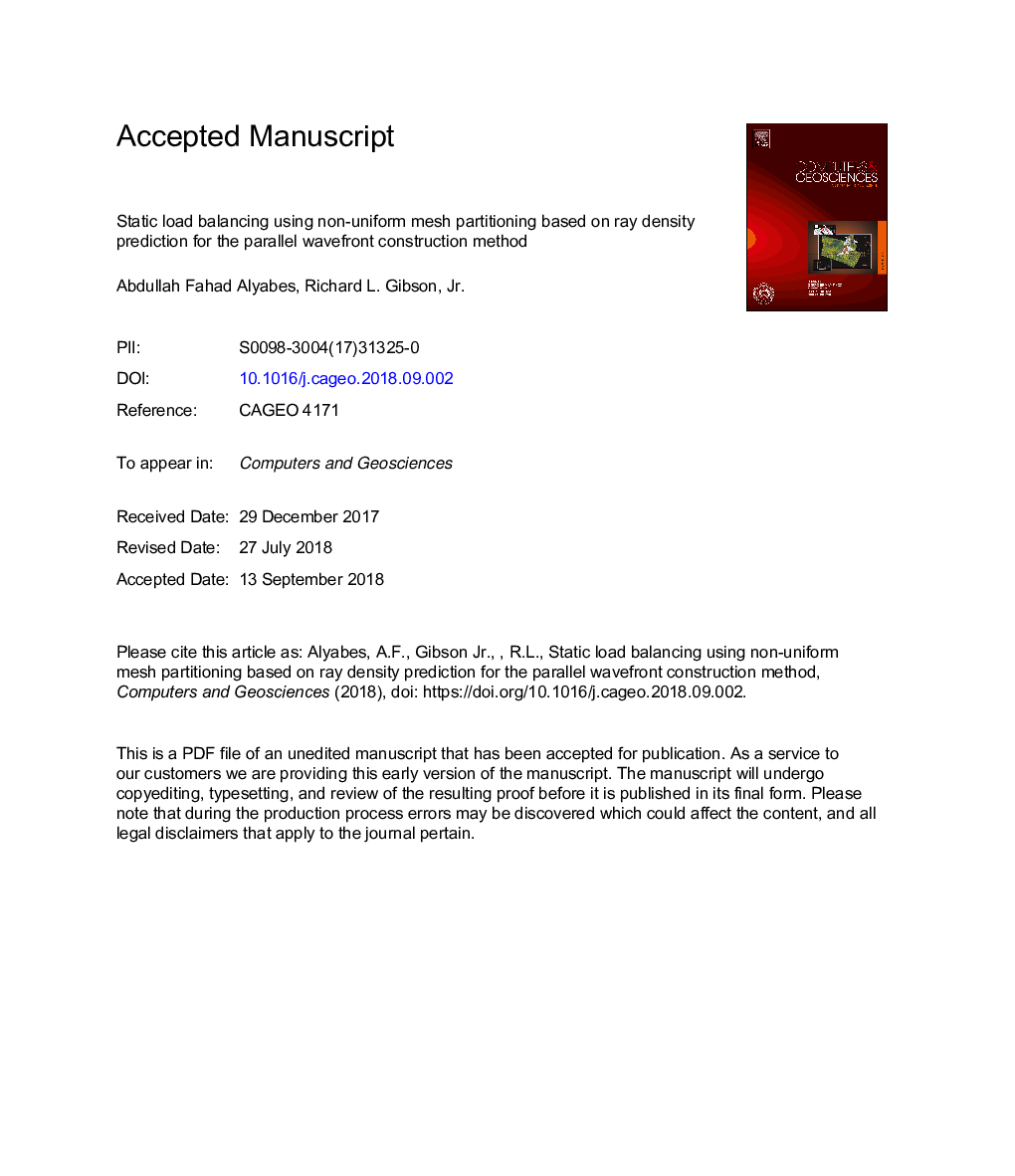| Article ID | Journal | Published Year | Pages | File Type |
|---|---|---|---|---|
| 11023927 | Computers & Geosciences | 2018 | 43 Pages |
Abstract
The Wavefront Construction (WFC) method, which was developed based on ray theory, is one of the most efficient seismic modeling tools. WFC propagates a wavefront represented by rays in a computational mesh that is refined whenever an accuracy criterion is violated. Since WFC interpolates new rays during wave propagation, the wavefront mesh is considered highly adaptive. Recently, a parallel WFC was developed using the Standard Template Adaptive Parallel Library. However, due to wavefront density adaptivity, the parallel implementation exhibits inefficient performance owing to load imbalances between processors. In this paper we apply a static load balancing approach based on the prediction of future load for a synthetic salt dome model, to improve performance. This approach utilizes a preliminary conventional ray simulation to estimate the cost (future load) of each cell in the WFC's initial wavefront mesh. Then it applies a non-uniform mesh decomposition that results in a more efficient parallel WFC. Compared to the original implementation, our implementation shows better and more stable scalability in most WFC simulations conducted on the salt model. This paper contributes to understanding the behavior of wavefront mesh adaptability and predicting earth model complexities, and serves as a guide for achieving the ultimate goal, a fully load-balanced parallel WFC.
Related Topics
Physical Sciences and Engineering
Computer Science
Computer Science Applications
Authors
Abdullah Fahad Alyabes, Richard L. Jr.,
